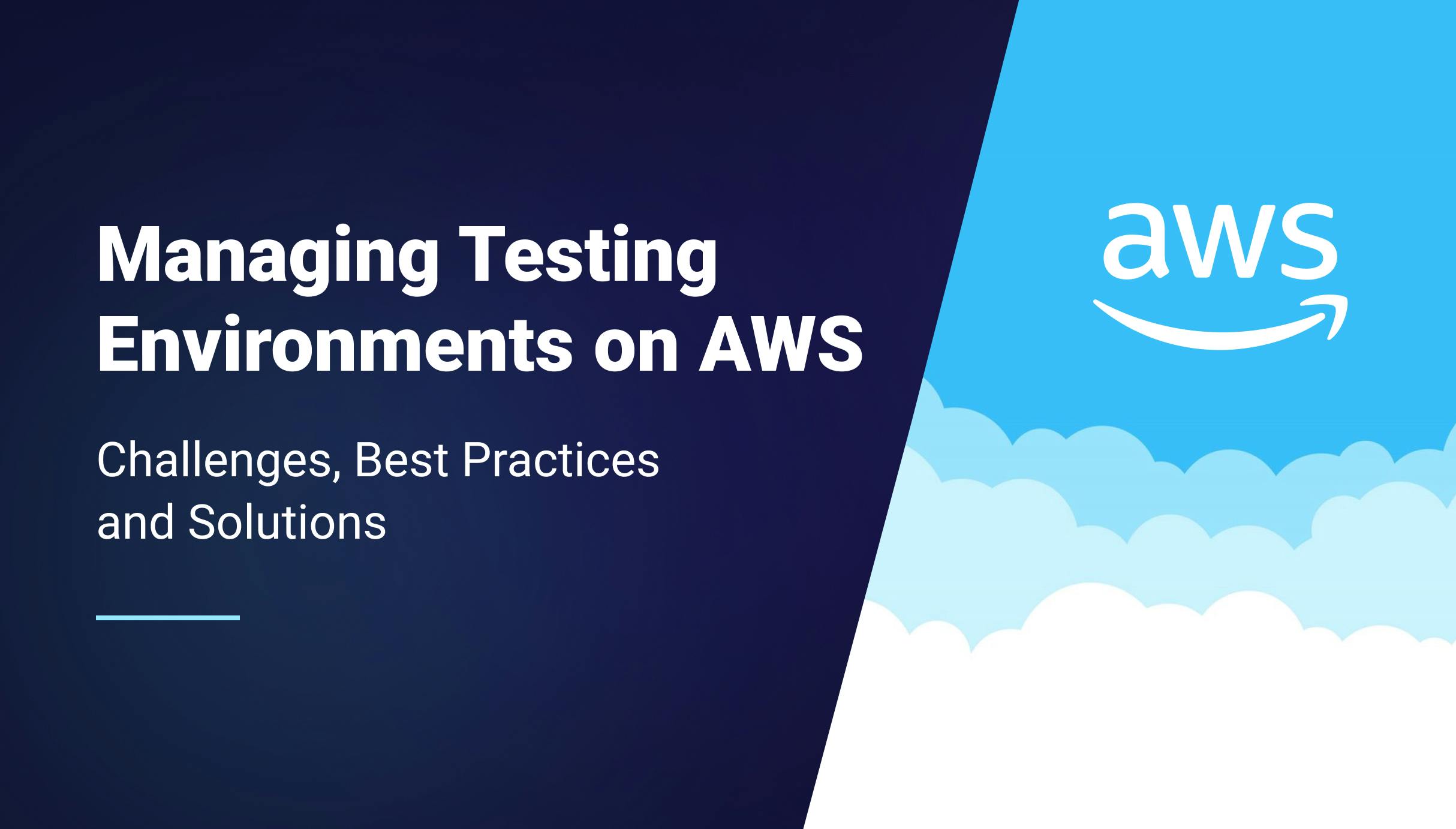How to Successfully Implement an Environment as a Service (EaaS) Solution in Your Software Development Workflow
In today's fast-paced and competitive software development landscape, the ability to quickly and efficiently manage development environments is critical to success. This is where Environment as a Service (EaaS) comes in. EaaS is a cloud-based solution that lets developers quickly establish and manage development environments. EaaS simplifies infrastructure management, helping developers work faster and create better apps. It also lets companies quickly scale their development efforts to meet changing market and customer needs.

Morgan Perry
April 18, 2023 · 8 min read%20(1).jpg?ixlib=gatsbyFP&auto=compress%2Cformat&fit=max)
Developers often face difficulties managing environments due to the complexity of setup and management, the expense and scalability issues of dedicated infrastructure, compatibility concerns between applications, and security risks. EaaS solves these problems by enabling developers to spin up pre-configured environments easily, providing scalability, offering multiple runtime environments for compatibility, and providing security features such as SSL certificates and encryption at rest. Using EaaS platforms like Qovery allows developers to focus on designing and deploying applications, accelerating development and reducing costs.
In this article, we will go through EaaS in detail. We will discuss the benefits of using EaaS and how EaaS solves the problems in the traditional software development workflow. We will then go through Qovery, one of the leading EaaS providers in the industry. Let's start with the reason for using EaaS in your development workflow.
#Why Implement EaaS in Your Software Development Workflow?
#A. Challenges of Traditional Software Development Workflows
In the introduction, we briefly discussed the challenges faced in the traditional development workflow.
Below we are listing down these challenges in detail:
- Time-consuming environment setup: Creating development, testing, and staging environments takes time. Developers spend time and make mistakes installing and configuring software components, dependencies, and services. A microservices-based application's local development environment may require several services, databases, and messaging systems with their own dependencies and configurations.
- Inconsistent environments: In traditional workflows, developers' local settings differ across development, testing, and production. "Works on my machine" and hard-to-reproduce difficulties can result. Changing configurations, dependencies, and infrastructure can cause a developer's local application to fail in staging or production.
- Limited collaboration: Traditional development methodologies hinder environment sharing and collaboration. Duplication, miscommunication, and slow development can occur. Two developers may debug the same issue without knowing it.
- Resource underutilization: Pre-provisioned servers, storage, and networking in typical development environments may be underutilized. This wastes resources and raises prices. A development team's dedicated testing server may waste resources and money.
- Testing and integration: Complex systems and dependencies make traditional development methods difficult and time-consuming. Development and software quality suffer. Monolithic application teams may struggle to test distinct components, resulting in longer testing cycles and more complexity.
- Security concerns: Development, testing, and staging may be less secure than production. Data breaches or illegal access during development may result. Developers may accidentally reveal critical data in development environments, which could be leaked.
#B. How EaaS Can Address These Challenges
Now that we know the challenges, it's time to see how EaaS helps us overcome them.
- Quick environment setup: EaaS lets developers build development, testing, and staging environments in minutes. Developers can focus on code and functionality instead of environment settings.
- Consistent environments: EaaS provides standardized development, testing, and production settings, ensuring consistency throughout the software development lifecycle. This decreases the likelihood of "works on my machine" difficulties caused by environment differences.
- Cost efficiency: EaaS only charges for resources used, unlike traditional development environments where resources may be misused. You don't have to maintain unneeded resources and can scale your settings up or down, saving money.
- Automated environment management: Automation and orchestration simplify environment provisioning and management in EaaS solutions. Developers can swiftly create, edit, or destroy environments, enhancing efficiency and minimizing human work.
- Integration and testing: Developers may quickly spin up environments with pre-configured components, services, and dependencies with EaaS. This accelerates testing, improving program quality.
- Security: EaaS lets development teams construct secure, isolated environments separate from production systems. This reduces the danger of data leaks or unwanted access during development.
#How to Implement EaaS in Your Software Development Workflow
#A. Steps to Implement EaaS
Find below the details of how to actually implement an EaaS solution in your organization's development workflow:
- Evaluate your software development process: Analyze your process before choosing an EaaS solution. Find bottlenecks, inefficiencies, and improvement areas. Consider how much time your team spends setting up and managing environments, the problems they experience in keeping consistency between environments, and team communication.
- Choose the right EaaS provider: After assessing your software development process, find the finest EaaS provider. Consider the simplicity of use, integrations with existing tools, supported languages and frameworks, scalability, and pricing. If your team builds full-stack and complex apps and heavily uses AWS services, you might choose an EaaS provider like Qovery that integrates with AWS.
- Configure your EaaS environment: After selecting an EaaS provider, configure your environment to meet your team's needs. Set up databases, communications systems, application servers, environment templates, and access controls. For a given project, you may develop an environment template with a pre-configured PostgreSQL database, Redis cache, and Node.js application server to ensure consistency.
- Integrate EaaS into your software development workflow: Integrate EaaS into your development cycle to optimize benefits. This may require integrating your EaaS solution into your version control, CI/CD pipeline, and project management tools. A continuous deployment pipeline might automatically generate a new environment for each feature branch in your Git repository, deploy the latest code changes, and run automated tests.
- Train your team on EaaS: Finally, educate your team on the EaaS platform. EaaS training, documentation, and support help team members use it daily. For instance, you may provide a hands-on workshop where team members can try creating, maintaining, and sharing environments using the EaaS platform or offer video lectures and step-by-step guidance on key EaaS ideas and capabilities.
#B. Tips For Successful Implementation
The above steps must be followed regardless of your chosen EaaS tool. On top of that, you will also need to apply best practices to ensure the optimal utilization of an EaaS solution. Let's find those best practices below:
- Ensure compatibility with existing tools: Make that your EaaS solution works with your development tools, such as version control systems, CI/CD pipelines, and project management tools. This provides a smooth integration and reduces team workflow disturbance. Make sure your EaaS provider supports your Git provider for version control and integrates with your CI/CD solution.
- Start with a small project: To familiarize your team with EaaS and iron out any issues, start with a low-risk project. This method lets you practice EaaS without compromising mission-critical project delays. Instead of a significant, customer-facing application, you may start with EaaS for a new internal tool or feature update.
- Monitor and optimize your EaaS environment: To maintain optimal performance and team needs, monitor your EaaS environments: track resource utilization, environment provisioning timeframes, and deployment success rates to optimize environments and EaaS configurations. If your test environments are underutilized, you might reduce resources or auto-scaling settings to save money.
- Encourage team collaboration: EaaS makes sharing and collaborating on environments easier, improving team collaboration. Encourage your team to use these features and develop best practices for environment sharing, versioning, and communication. You may create a naming convention for environment branches or a process for seeking and providing access to shared environments to help team members communicate and avoid duplication.
- Communicate the benefits to stakeholders: Communicate EaaS benefits to stakeholders and decision-makers to gain buy-in and obtain resources for a successful rollout. EaaS can speed up software development, cut expenses, and improve efficiency. You may offer a case study on how EaaS has lowered environment provisioning times, developer productivity, and infrastructure expenses at similar firms.
#How Qovery Can Help Implement EaaS
Qovery simplifies the way you can use EaaS to master the hurdles we discussed in this article. Let's see in detail how it does this:
- Simplicity: Qovery abstracts infrastructure to simplify application deployment. Without resource management, developers can focus on writing code. The platform automatically configures infrastructure, services, and applications.
- Git Integration: Qovery connects flawlessly with GitHub, GitLab, and Bitbucket. Continuous deployment ensures your application is always up-to-date. Qovery automatically deploys Git repository changes to the appropriate environment.
- Automatic Scaling: Qovery automatically scales your applications based on demand.
- Monitoring and Alerts: Qovery monitors and alerts your application's performance, resource utilization, and potential faults. This functionality helps you proactively find and fix issues, giving users the greatest experience.
- Isolated Environments: Qovery has this unique capability to create isolated deployment environments for each team member. That ensures that one developer's changes do not break the code of other.
- Collaboration and Access Control: Qovery lets you share environments and manage access controls to make project collaboration easier. Team communication, knowledge sharing, and collaboration improve.
- Cloud Agnostic: Qovery supports AWS but also other cloud providers like Scaleway, Google Cloud, and Azure (planned for the end of 2023). This flexibility lets you choose a cloud provider based on performance, pricing, and features or deploy your applications across many cloud providers for redundancy and resilience.
Qovery has an EaaS offering called Preview Environments, leveraging EaaS to the next level. This product is unique in the market. Besides streamlining the development process with on-demand environments, it offers a preview environment for every Pull Request (PR) on your code repository, which results in faster releases, improve team collaboration, and reduce bugs in production.
Check out this short video to see the Preview Environment in action!
#Video
#Conclusion
Implementing an Environment as a Service (EaaS) solution can significantly benefit your software development workflow. By using EaaS, you can overcome challenges faced by traditional development workflows, such as managing complex environments, reducing deployment times, and improving collaboration among team members. As one of the leading EaaS providers in the market, Qovery offers a user-friendly and intuitive platform that can help you successfully implement EaaS into your software development workflow.
To experience first-hand the power of Qovery's EaaS, start a 14-day free trial.
Sign–up here - no credit card required!
Your Favorite Internal Developer Platform
Qovery is an Internal Developer Platform Helping 50.000+ Developers and Platform Engineers To Ship Faster.
Try it out now!

Your Favorite Internal Developer Platform
Qovery is an Internal Developer Platform Helping 50.000+ Developers and Platform Engineers To Ship Faster.
Try it out now!

